Johns and Janin chart a new course for DC's past and future in Justice Society of America #1
Geoff Johns and Mikel Janin dig deep into their JSA relaunch
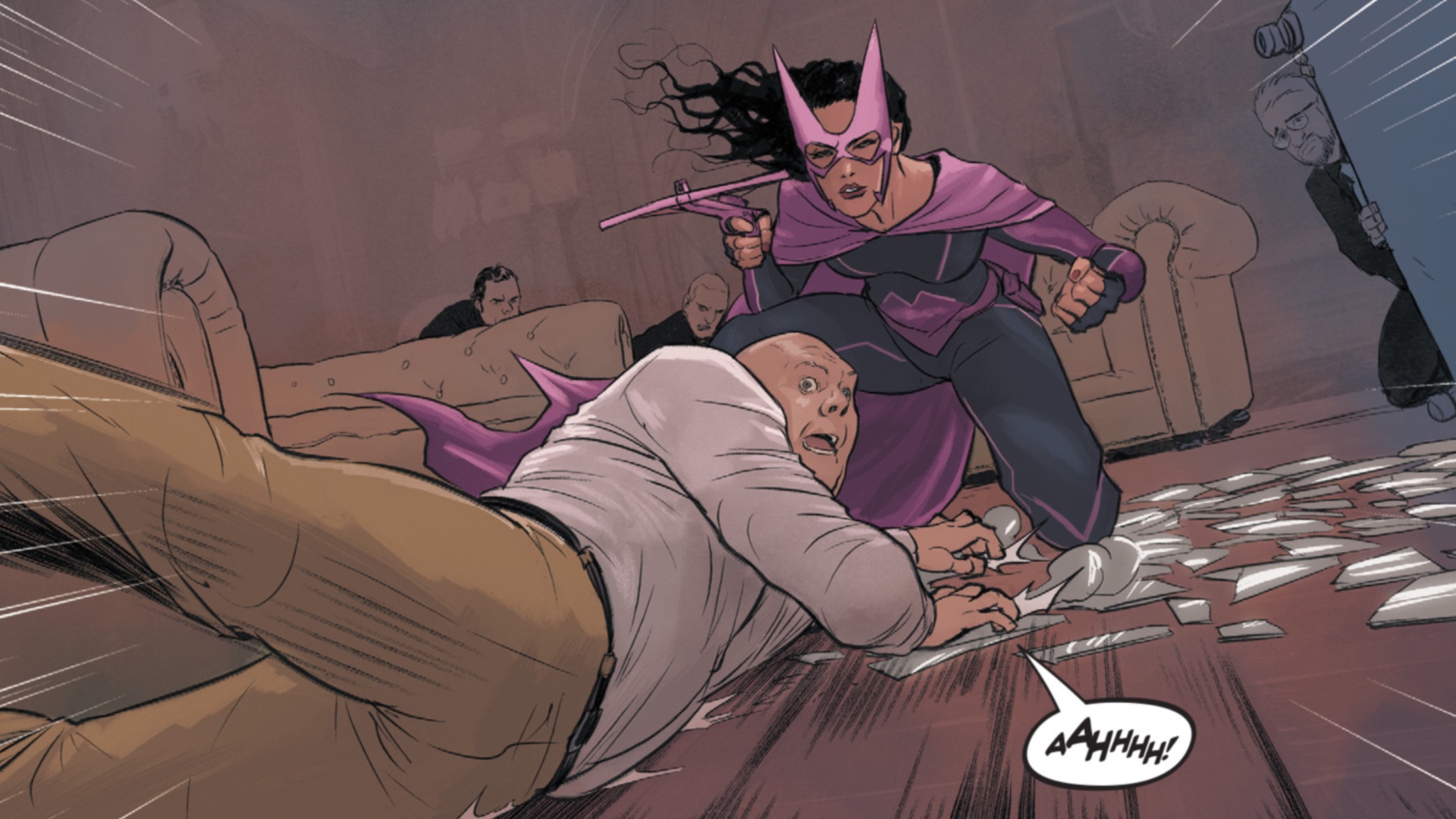
DC's past has a fascinating future. Confused? Don't be; that's the basic premise to DC's New Golden Age, a series of comics that will unveil new truths and new characters at the very dawn of DC's age of superheroes, the '40s. Appropriately, one of the first great mysteries of the New Golden Age has to do with the Justice Society of America, the publisher's first superteam.

On sale November 29 is Justice Society of America #1, the third comic to dig into the mystery of why DC's past is changing, right after the New Golden Age One-Shot and Stargirl: The Lost Children #1. Like both of those comics, JSA #1 is written by Geoff Johns, but unlike them, the series is drawn by Batman and Superman and the Authority artist Mikel Janin.
Newsarama spoke with the creative team to get at the heart of designing and plotting out a new history for DC; you can read what they had to say below. But be warned before you continue: spoilers for the issue will follow, so only read this once you've checked out JSA #1.
Grant DeArmitt for Newsarama: Mikel, I'm going to throw this first one at you. Obviously, Geoff has done a ton of research into DC in the '40s. Have you been doing the same kind of research? And if so, what are you getting from comics in that era?
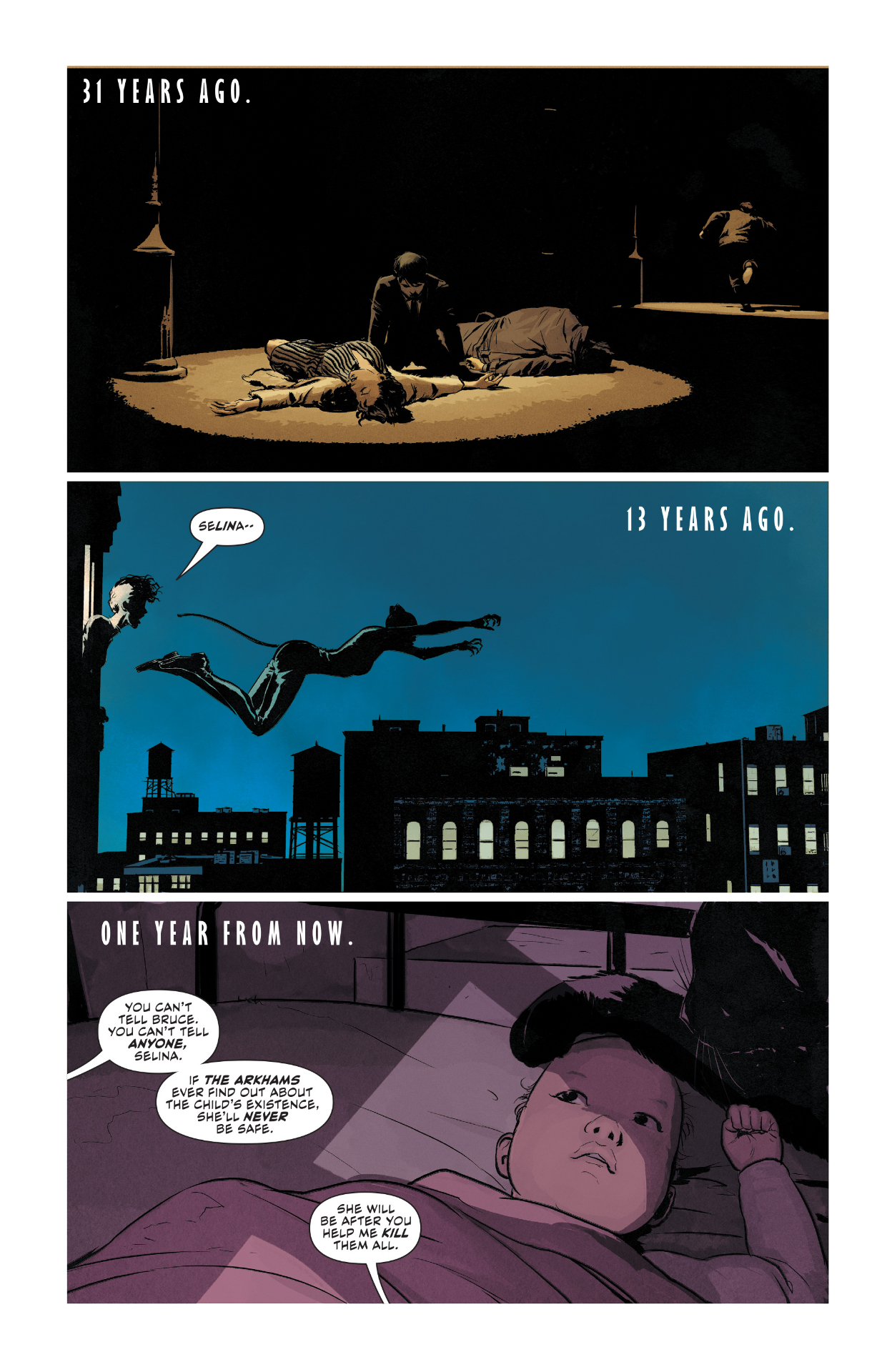
Mikel Janin: I don't think I've read a lot of that time, especially DC books. The comics I've read from this time were Spanish comics. When I was younger, it was difficult to find certain comic books in my country, so my first contact with the original JSA was pretty recently when I started working in DC. That was when I met the actual team.
Nrama: Gotcha. Are you taking any influence from those '40s comics that you read?
Janin: Of course. When you're thinking of those characters, I think the '40s aesthetics come straight to mind… Well, I think it's a mix because you have their look, their classic look; it's pretty close to the comics that we're doing. We're during that time, but it's mixed with the work of other artists like, for example, Ivan Reis or Jerry Ordway, who are way closer to our time.
Get the best comic news, insights, opinions, analysis and more!
Nrama I'm glad you brought that up because I do have a question about mixing styles. But Geoff, let's go to you first. You're working on three comics this month about the New Golden Age, and you're building quite a mystery. What does that process look like? How do you decide when to give out what information?
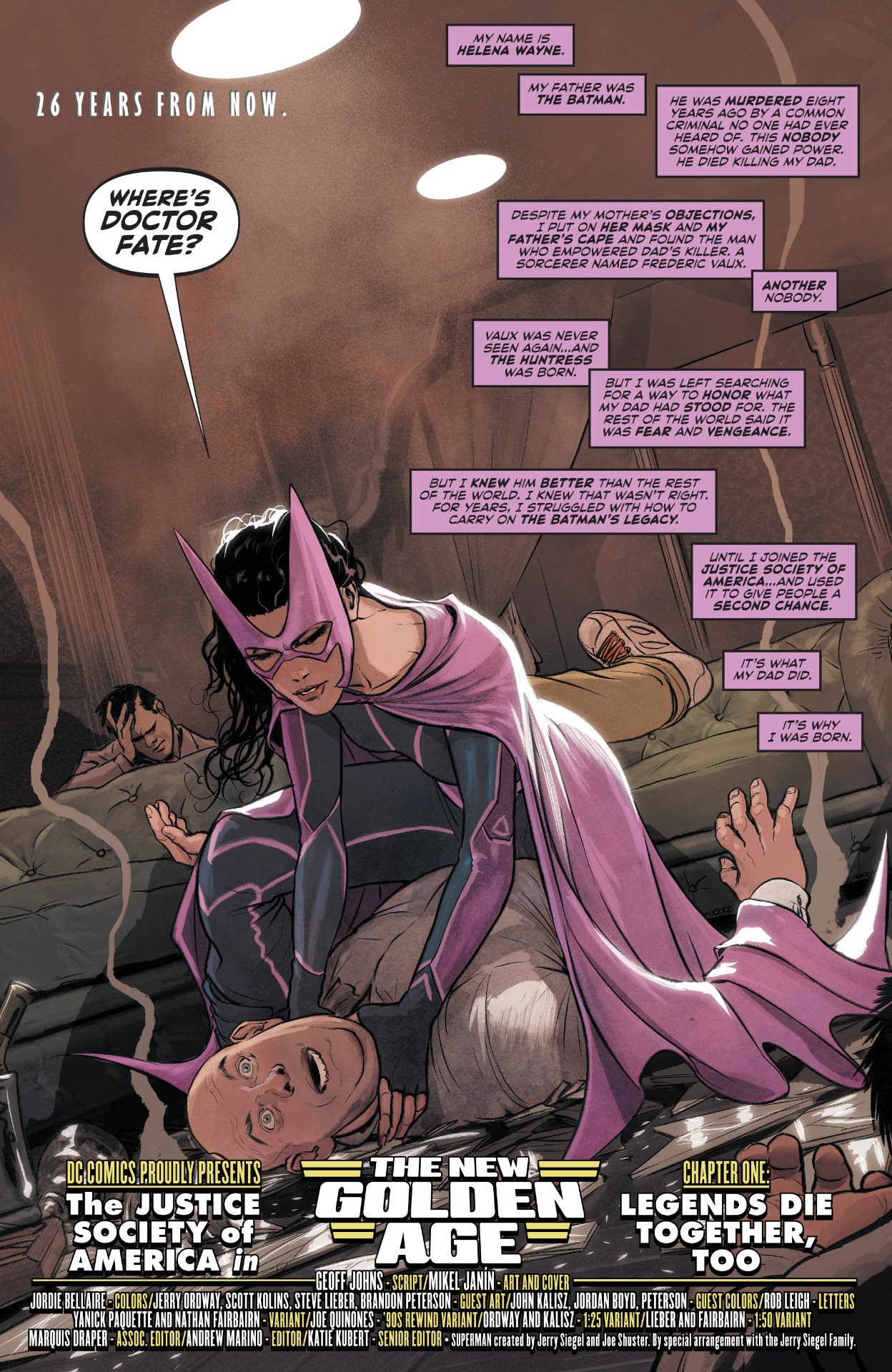
Geoff Johns: It's really about trying to make sure that the story and the mystery and everything culminate with the emotional center of the characters. So things are revealed when they're going to affect the characters the most. That's kind of how I write everything that I write. I like revelations and action and everything to peak with the emotional moments with the characters.
But peeling back the layers of the onion of the New Golden Age; that will just come as the story unfolds when the characters see and encounter and discover and uncover new things.
Nrama: So do you list the emotional beats of the story and plan reveals based on that?
Johns: It's not that mathematical. It's more like painting or sculpting. When I write, I kind of sketch it in my head, and then I start to put it on paper. It starts to get more fine, and then the dialogue comes in, and then the art comes in, and I do another little dialogue tweak. But it's not like a checklist of things that I'm gonna have happen.
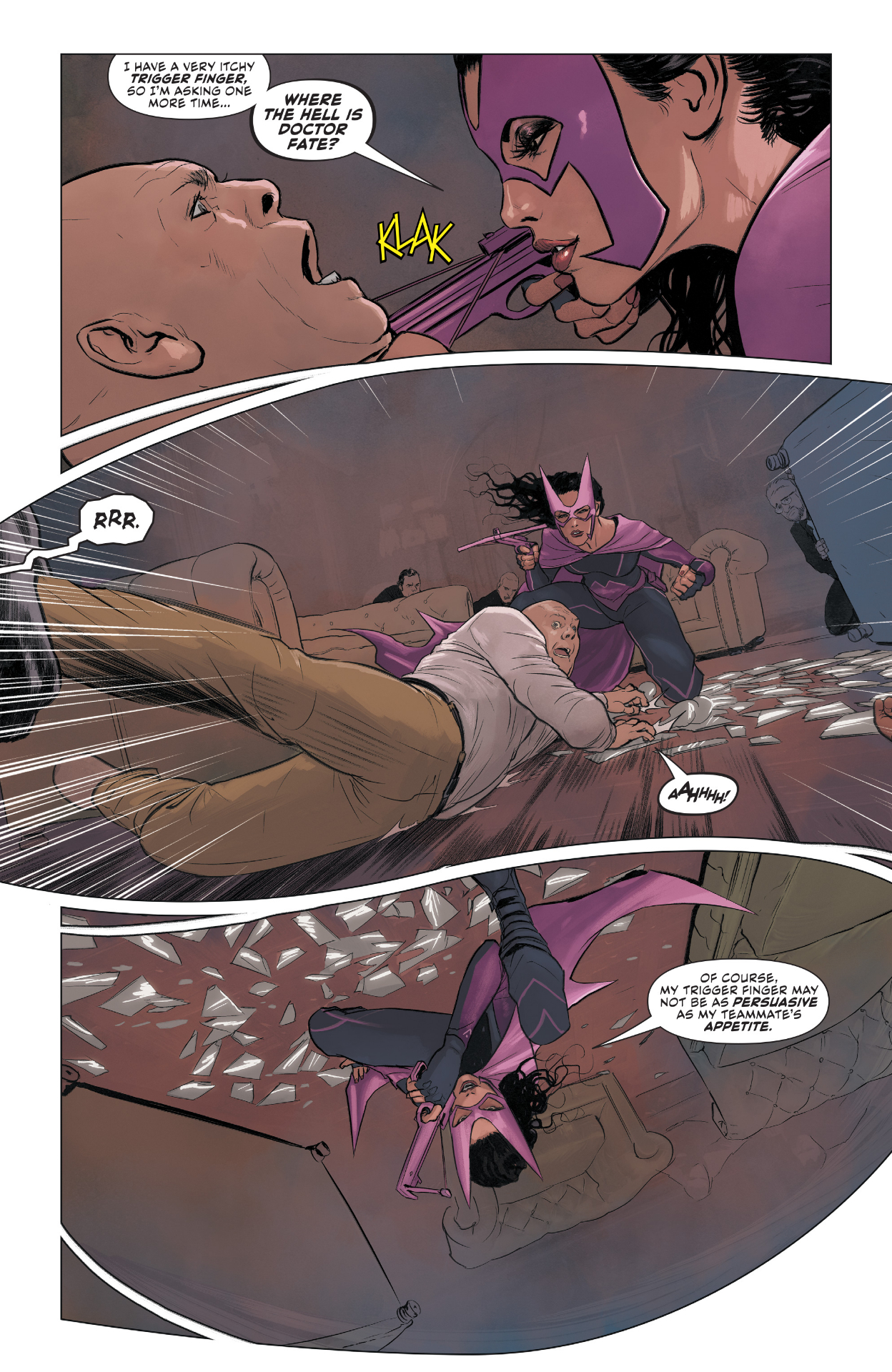
Nrama: I love that metaphor of sculpting. It's like that old saying that the sculptor finds the statue that's already in the stone.
Johns: Yeah. Sometimes, you know a story point, and there's a little detail that'll just click in a place that you weren't planning on. A lot of the time, the big ones stay the same, the big points. But there are some fine details that, as you're writing it, the characters take over a little bit. In JSA, a few of the characters took over and a couple of characters just kind of started talking.
Nrama: Like whom?
Johns: Selina Kyle is a voice in my head. I love Selina Kyle so much, and writing her is so fun. There's such a particular strength and attitude and perspective that she has that comes out. There's one scene in JSA one that I wasn't even consciously writing, it's just kind of, I was done. And then I'm like, ‘Oh, yeah, that's Selina Kyle.'
There are characters that take over like Power Girl. I met her when she was in Justice League Europe when I was reading comics. I hadn't really considered her a big part of the JSA, but when I brought her in, she became a huge character for me.
I love writing that character so much. I love her attitude and her power and her gruffness and her bad luck. There are so many interesting facets to her personality but it wasn't until I started writing her that I found them. Some characters surprise you. Some characters become your favorites that you didn't expect, and that's part of the fun of working in a universe like this.
Nrama: Was Helena Wayne also a surprise?
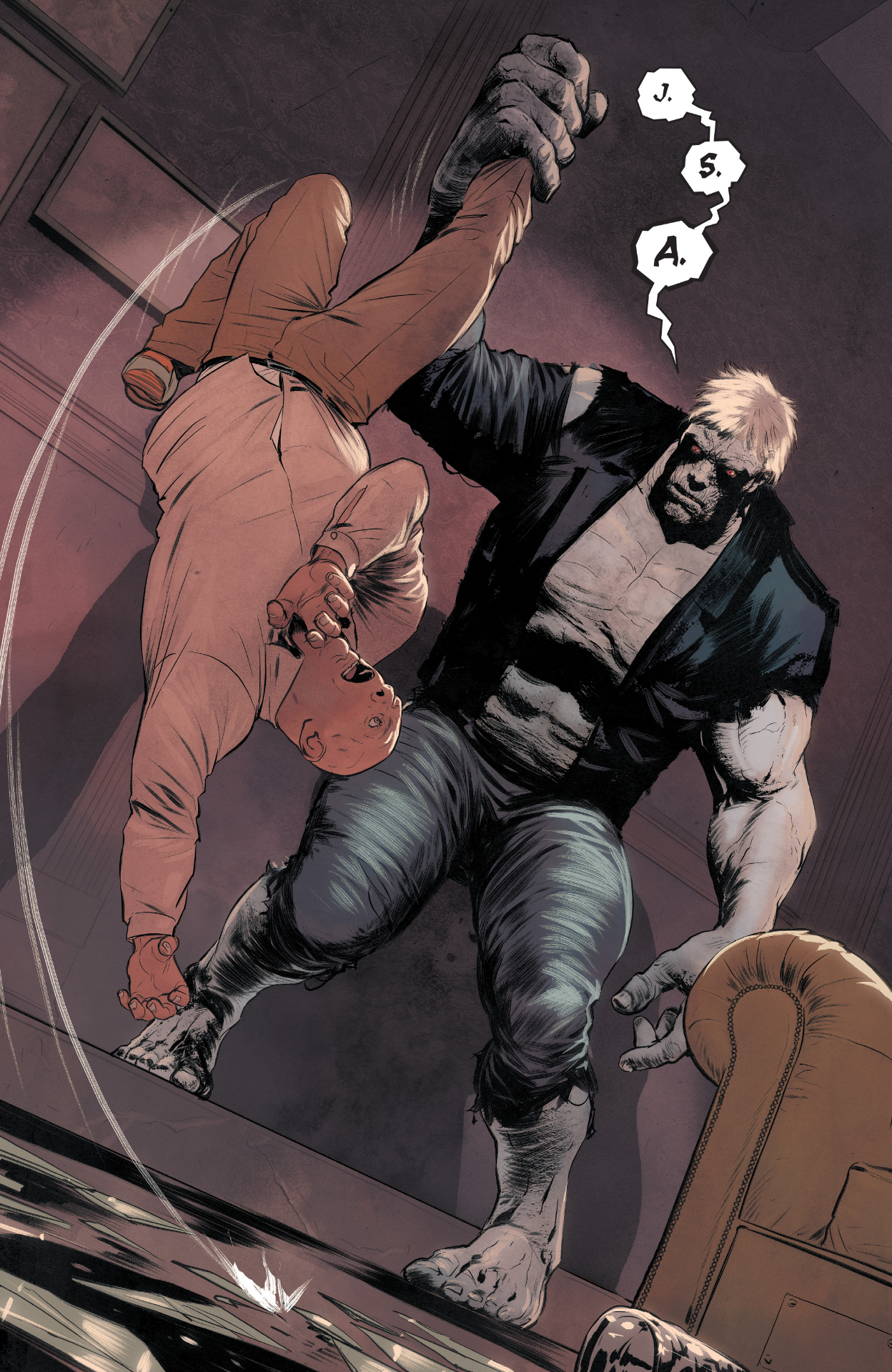
Johns: Well, I knew I wanted her to be the center of [New Golden Age] because I love the character, and I love the idea of somebody who embodies this almost redemptive point of view. Who's seeing her father in a different way than everybody else in the world, what Batman meant.
From her point of view, it was like, well, he could love Catwoman, and I'm the personification or the result of that union, and that kind of redemption for both of them. Bruce also needed it in terms of how much he let himself love people. Then you see her take the JSA and take on responsibility. She became a really interesting character to me, a really interesting legacy because she's such a complicated one.
Nrama: Yeah, definitely. Well, on the subject of Helena - Mikel, this is the question that I mentioned earlier. The design of her costume, at first glance, looks like a dead ringer for her original costume, especially the really tall cowl. But the more you look at it, the more you realize how modern and unique it is. Can you talk about that design?
Janin: It's funny, I'm listening to Geoff's process and I think in some ways mine is similar. You approach the character you think you know from other books, or you have an idea of how she is. But when you really meet her is when you start working with her, and you discover who she is, and it's not what you do to the character, but the character tells you how she will look.
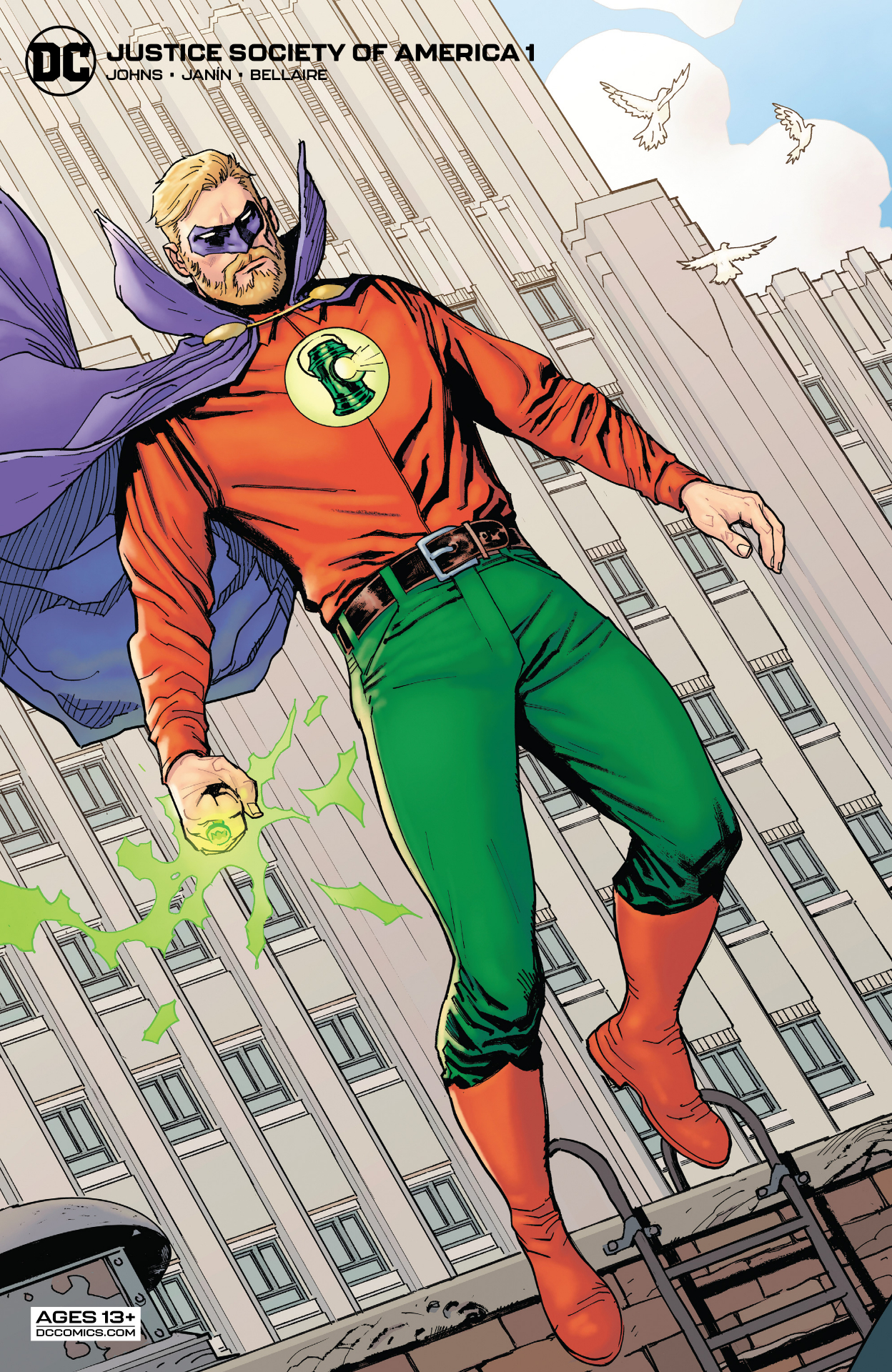
And so what you have is some ideas like the cowl. It's the classic cowl, but you know because of the script that the cape is the Batman cape, actually. Then you know she's a character in the future, so you have to think, ‘How would a girl like this dress in that time?' She will take on the legacy of her mother and dad, and they're well-known characters.
So you try to put in a bit of everything, and it takes on a life by itself. So it's funny to see the process, and how it develops, and almost creates itself.
Nrama: Did you apply that same sort of thinking to the other legacy characters that we meet in this book, such as the new Red Lantern, the daughter of the original Red Lantern? [editor's note: Not the Red Lantern you might be thinking, reader. This one is a Soviet superhero. See below.]
Janin: Most of these characters, the idea comes from Geoff. He has already the idea of how they should look, or Jerry Ordway has. So what I do is take them in the scene, and they take on life there, there's always something that you didn't think of and comes to you on the fly. So I didn't have something very especially thought out for these characters, but it simply flows with the work.
Nrama: Yes absolutely it does. Okay, so you have these new JSA members in the first issue, even though they're only around for a little bit. It's very interesting that they're sitting at that table, especially since some of them are villains. So, Geoff, what's got Solomon Grundy sitting at the JSA table? Or Gentleman Ghost?
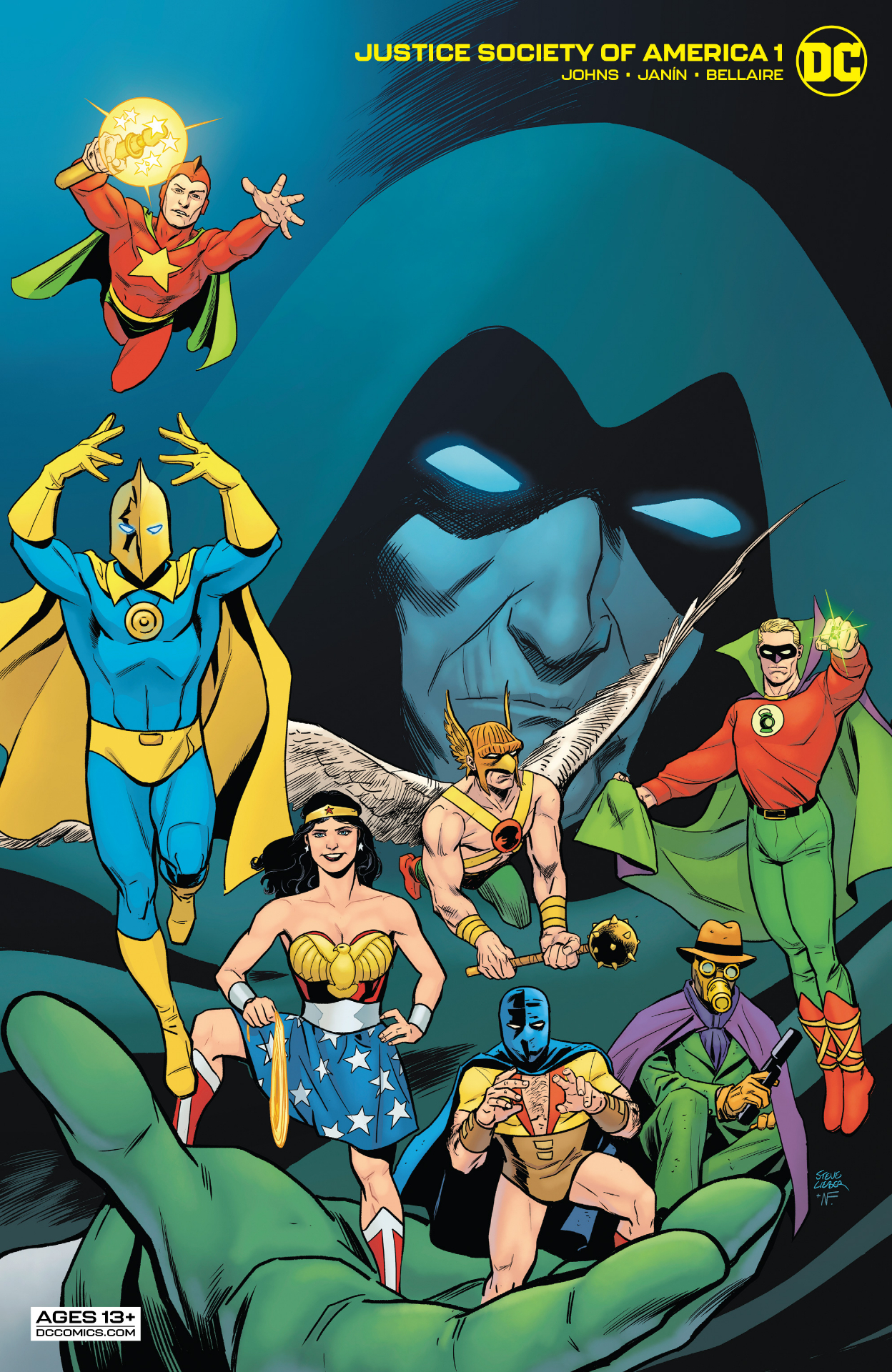
Johns: They each have their own stories about why they join. Grundy's is pretty simple, because in every incarnation he is slightly different. Ruby [Red Lantern] as well. But there are stories with people like The Harlequin's Son that we'll see later on. We'll get deeper into him. Kyle Knight, The Mist, has his own regrets, and he mentions something as he — spoiler — dies. He says, ‘I'm sorry, Cosmo.'
So there's a story there, him and [Stargirl's] staff. Each one of them has a story. But the idea here is just to scratch the surface of them. Obviously, there's a bigger story with Huntress and her JSA, but we just haven't told it quite yet.
Nrama: Very cool. Alright, we're winding down here. Mikel, you've made such a mark on Superman in the past couple of years with the War World and the Authority designs. What do you think your visual imprint on the JSA is going to be?
Janin: Well, that's a good question. I hope that I will leave something on them, you know. Sometimes you have the opportunity to work on a character such as Superman, and you don't always have the chance of doing something relevant. But suddenly it happens so that, as you said, it's a new design, and it sticks with people, and in just a few issues makes an imprint on the people.
I hope it happens with the JSA. I think we have a lot of characters that I'm loving drawing. Really loving them, especially Huntress, like you said. But the thing is, there are so many, many characters, like Doctor Fate. I love him. So I just hope that when the story is said and done, there will be something that I've put on them. That's enough.
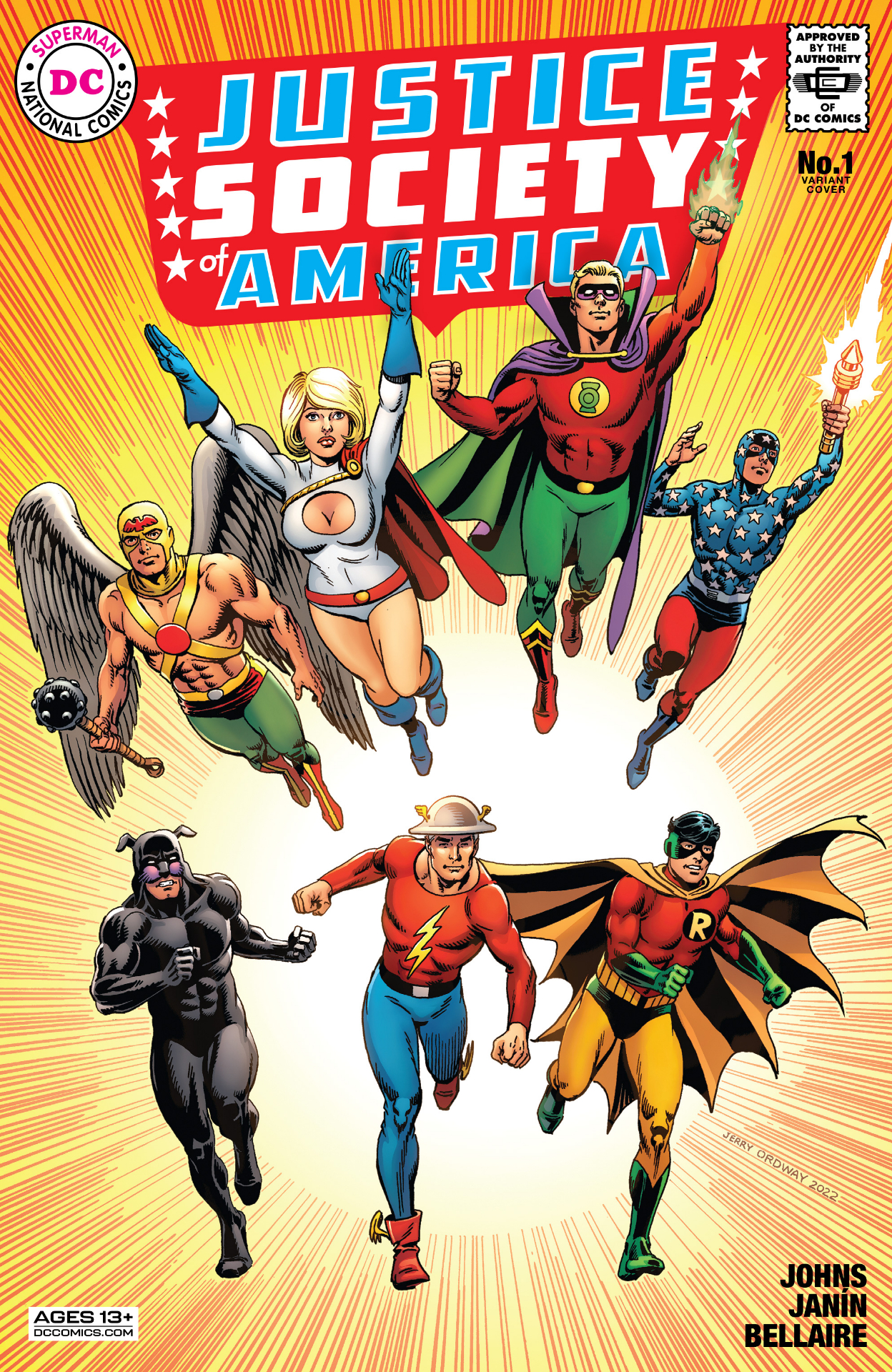
Johns: What Mikel brings to the book and, I mean, all the work he does, is something so grounded. And it's so beautiful. There's just something so iconic about his artwork in this book. I mean, I can't stop looking at it. I got my comps two days ago, and I can't stop looking at it.
There's just this powerful storytelling, too, that's so clean. When I see this I'm like, ‘I gotta buy that page,' every page. It's all just gorgeous. It feels, Mikel, like you're elevating the JSA book. You're elevating this title in a way that makes it feel really special. And it's been a while since the JSA had a book, and it's great that it feels so special.
Nrama: I gotta say, just on the subject of Mikel's art here, I love how some of the scenes are lit by the characters themselves. For example, Power Girl gets Kryptonite poisoning, which makes her glow green, or Gentleman Ghost will cast this blue illumination.
Janin: That's also Jordie Bellaire, the colorist. She's a legend.
Nrama: Agreed. Alright Geoff, final question, The last time you and I talked was for the end of Flashpoint Beyond, you mentioned that the New Golden Age would affect not just the past, but the future of the DCU. How will the events of the New Golden Age affect the “next generation” of DC's heroes, such as the ones from Future State?
Johns: Well, I'm really focused on the Justice Society side, so it's things like introducing the idea of the Red Lantern, right? Then that character has a legacy, a brand new legacy in the DC Universe. Then, you know, there's The Harlequin's Son.
There are the new characters that have been reintroduced or introduced into the '40s. And because they now have a history, that history has a future. It's all about legacy. Those legacies start to extend into every era, from today to the far future. That's really how it's going to affect things.
Justice Society of America #1 is on sale November 29. Along with Johns and Janin, the book features work by colorist Jordie Bellaire; guest artists Jerry Ordway, Scott Kolins, Steve Lieber, and Brandon Peterson; guest colorists Peterson, John Kalisz, and Jordan Boyd; and letterer Rob Leigh. Read all about the new retroactive characters of the New Golden Age with Newsarama's handy list.

Grant DeArmitt is a NYC-based writer and editor who regularly contributes bylines to Newsarama. Grant is a horror aficionado, writing about the genre for Nightmare on Film Street, and has written features, reviews, and interviews for the likes of PanelxPanel and Monkeys Fighting Robots. Grant says he probably isn't a werewolf… but you can never be too careful.


